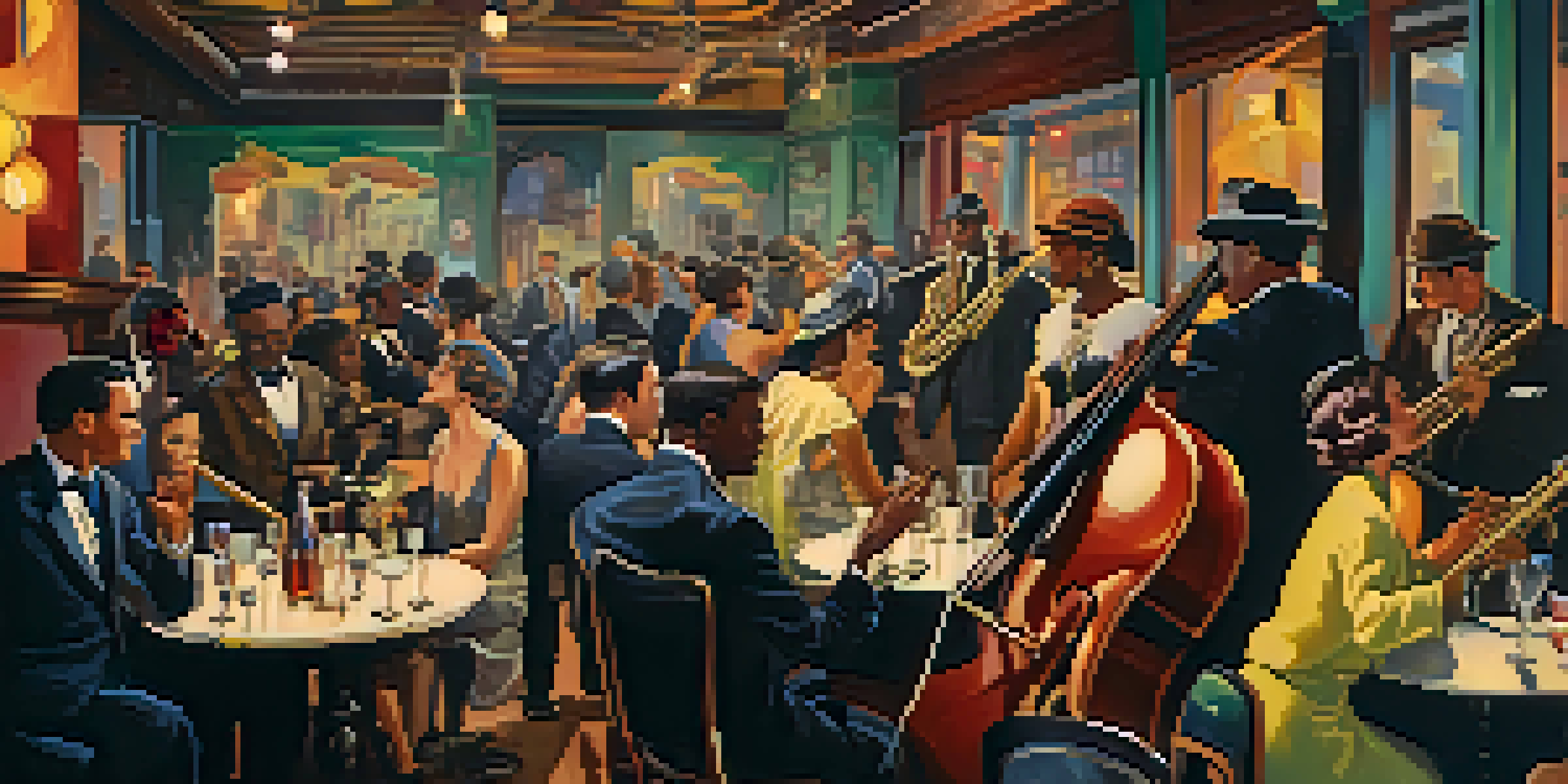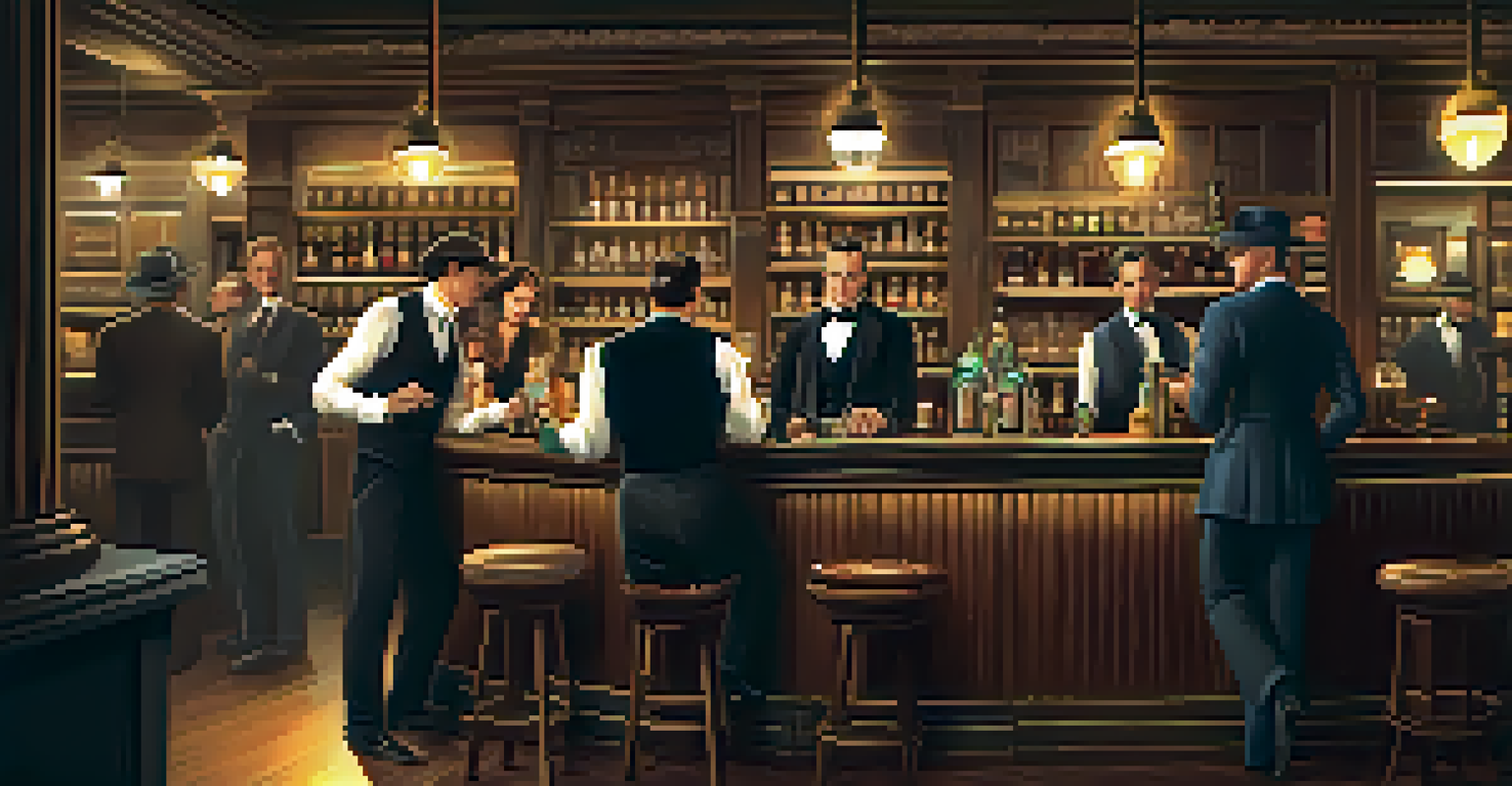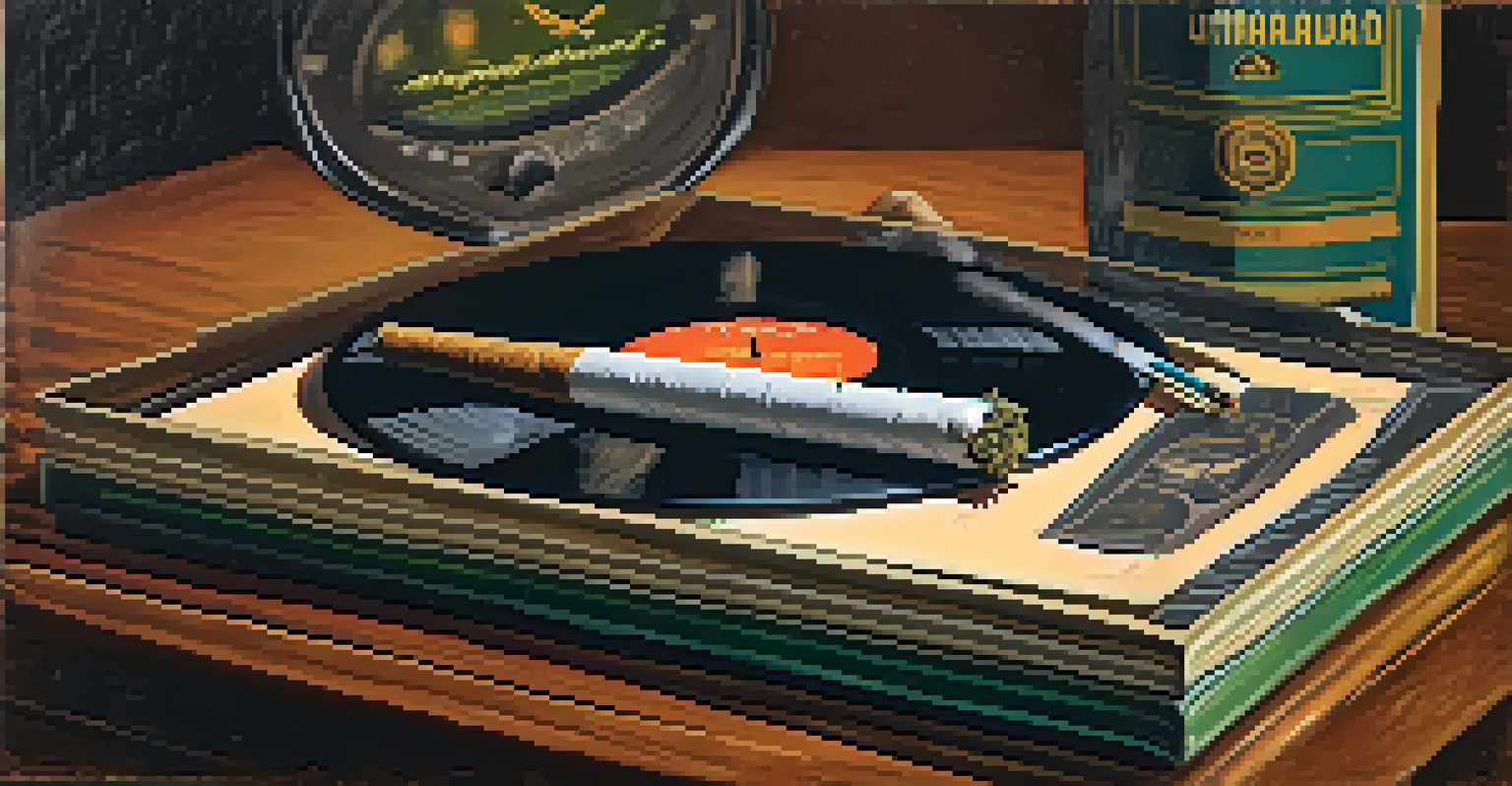Prohibition Era: The Shift of Marijuana Use in America

The Context of Prohibition: A Nation Divided
The Prohibition Era, spanning from 1920 to 1933, introduced a nationwide ban on alcohol. This period not only transformed drinking habits but also affected various substances, including marijuana. As the government sought to control behavior, many people turned to cannabis, highlighting a complex relationship between legality and usage.
Prohibition only drives underground the things that are bad, and makes them worse.
Interestingly, while alcohol was demonized, marijuana found a niche among those seeking an alternative. This shift sparked a cultural revolution where cannabis became a symbol of rebellion against restrictive norms. For many, it represented freedom and an escape from the drudgery of everyday life, despite the looming legal repercussions.
As the Prohibition Era progressed, the public's perception of marijuana began to change. It was no longer just a recreational herb but came to embody a counterculture movement, challenging the status quo. This laid the groundwork for a deeper societal shift regarding drug use that would unfold in the decades to come.
Changing Attitudes Toward Cannabis in the 1920s
In the 1920s, marijuana began to be associated with jazz culture and the vibrant nightlife of cities like New Orleans and Chicago. Jazz musicians often used cannabis as a source of inspiration, linking its use to creativity and artistic expression. This cultural connection helped to popularize marijuana, despite its legal status.

Moreover, the portrayal of marijuana in the media began to evolve. Sensationalist stories and films, like 'Reefer Madness,' painted cannabis as a dangerous substance, yet this only fueled curiosity and intrigue among the youth. The more it was demonized, the more appealing it became to those looking to push back against societal norms.
Prohibition Shaped Cannabis Culture
The Prohibition Era laid the groundwork for modern cannabis culture, fostering resilience and community among users.
As more individuals experimented with marijuana, it became intertwined with the fight for personal freedoms. This era saw the rise of underground speakeasies where both alcohol and cannabis were consumed, fostering a sense of community among users. It was a time when the lines between legality and personal choice began to blur.
The Role of the Jazz Age in Popularizing Cannabis
The Jazz Age, a cultural movement that coincided with Prohibition, played a significant role in popularizing cannabis. Musicians and artists embraced marijuana, often celebrating it in their work. This endorsement helped to create an aura of glamour around the drug, attracting a wider audience.
The law cannot make a man moral; it can only restrain him from being immoral.
As jazz clubs flourished, cannabis became a staple in these vibrant spaces. Patrons indulged in marijuana alongside their drinks, and the two substances became intertwined in the nightlife experience. This cultural acceptance among influential figures helped shift public perception, showing that marijuana was more than a taboo substance.
However, this newfound popularity also drew the ire of authorities. The government began to crack down on marijuana as a means of maintaining control during Prohibition. Yet, the Jazz Age had already set the stage for a dialogue about cannabis that would continue to evolve long after the end of Prohibition.
The Connection Between Prohibition and Cannabis Legislation
Prohibition's framework for regulating substances laid the foundation for future cannabis legislation. The government's attempts to control alcohol consumption led to increased scrutiny of other drugs, including marijuana. This paved the way for a more punitive approach to drug use that persisted for decades.
During this time, the Marihuana Tax Act of 1937 was introduced, effectively criminalizing cannabis. This legislation was rooted in the same moralistic sentiments that fueled Prohibition, aiming to eradicate what was perceived as a social menace. Ironically, it was a time when marijuana was gaining popularity, further complicating the narrative.
Jazz Age Popularized Marijuana Use
The Jazz Age connected cannabis with creativity and rebellion, significantly shifting public perception despite its legal status.
The lessons learned during Prohibition about the ineffectiveness of outright bans would later shape discussions around drug policy. As society began to recognize the flaws in prohibitive strategies, a gradual shift towards legalization and decriminalization of marijuana began to take shape, rooted in the very era that sought to suppress it.
Cultural Shifts Post-Prohibition: Reevaluation of Marijuana
The end of Prohibition in 1933 marked a significant cultural shift, prompting society to reevaluate its stance on various substances. As attitudes toward alcohol relaxed, discussions about marijuana began to emerge more openly. This created an opportunity for cannabis advocates to push for its acceptance and even legalization.
The 1960s and 1970s saw a resurgence of interest in marijuana, fueled by the counterculture movement. Young people embraced cannabis as a symbol of rebellion against the conservative values of previous generations. This period represented a pivotal moment in American history, where marijuana became a focal point for discussions about freedom and personal choice.
As the stigma surrounding marijuana began to diminish, it became clear that the effects of Prohibition were far-reaching. The dialogue around cannabis shifted from one of fear to one of exploration, setting the stage for the legalization movements we see today. The legacy of the Prohibition Era continues to influence contemporary attitudes and policies surrounding marijuana.
The Impact of Prohibition on Modern Cannabis Culture
The Prohibition Era has had a lasting impact on modern cannabis culture, shaping everything from consumption patterns to advocacy efforts. The underground networks that emerged during Prohibition laid the groundwork for today’s cannabis community, fostering a spirit of resilience and camaraderie among users. This culture celebrates both the joys of cannabis and the fight for its acceptance.
Today, the landscape of marijuana use in America has transformed dramatically, with legalization sweeping across many states. The shadow of Prohibition still looms, reminding advocates of the importance of continued education and awareness. As society moves toward normalization, the lessons learned from Prohibition inform current discussions about drug policy and personal freedom.
Lessons from Prohibition's Impact
The failures of Prohibition highlight the need for informed discussions on cannabis regulation and policies today.
Moreover, the ongoing battle for cannabis rights reflects the historical struggles faced during Prohibition. Activists continue to fight against the stigma that lingers, advocating for equitable access and fair treatment for all cannabis users. The legacy of Prohibition is a reminder of the power of cultural shifts, shaping the narrative surrounding marijuana in the present day.
Conclusion: Learning from the Past for the Future
Reflecting on the Prohibition Era provides valuable insights into the evolving landscape of cannabis in America. The complexities of drug use, legality, and societal values are intertwined, revealing the need for a nuanced approach to cannabis policy. As history shows, outright bans often lead to unintended consequences, making discussions about regulation essential.
It's crucial to understand the lessons of the past as we navigate the future of cannabis use. The dialogue surrounding marijuana has shifted dramatically, and the movement towards legalization is gaining momentum. By learning from the experiences of the Prohibition Era, we can foster informed conversations about addiction, health, and personal freedom.

Ultimately, the story of marijuana in America is one of resilience and transformation. As society continues to confront the legacy of Prohibition, it is essential to advocate for policies that reflect the values of justice, equity, and understanding. The future of cannabis is not just about legality; it’s about embracing a culture that honors the complex history behind it.